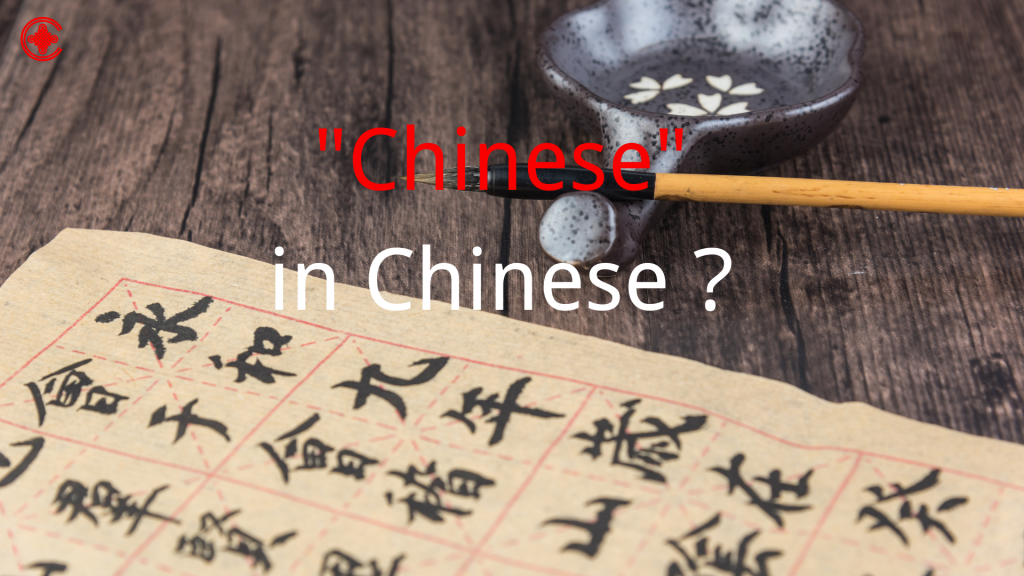“Chinese” in Chinese: Unlock Guide to Mandarin Pronunciation

How to Say Chinese in Chinese: A Guide to its Many Names
Learning Chinese opens up a world rich in history, culture, and linguistic diversity. However, one of the first puzzles that learners encounter is the various names for the Chinese language itself.
Understanding how to say Chinese in Chinese is not just about expanding vocabulary; it’s about appreciating the language’s regional, cultural, and historical dimensions. In this guide, we’ll explore the nuances of these terms and their appropriate usage, offering a clearer view of the Chinese linguistic landscape.
How to Say Chinese in Chinese
Understanding how to spell Chinese in Chinese is a fascinating aspect of learning the language. With its profound history and global significance, the Chinese language is uniquely identified by several terms, each reflecting different nuances of its usage and cultural context.
Knowing these variations is crucial for anyone delving into the language. It’s more than just learning how do you say Chinese in Chinese; it’s about gaining insight into a culture that values precision and context in its linguistic expressions.
Each term used to describe the Chinese language serves a specific purpose and context. For instance, when speaking about Mandarin in Mandarin, terms like 普通话 (Pǔtōnghuà), meaning ‘the common language,’ and 汉语 (Hànyǔ), referring to ‘the language of the Han people,’ are used. These distinctions are vital for learners navigating China’s dialects and regional languages.
Understanding these terms not only enhances effective communication with native speakers but also indicates a deeper understanding of the language being studied. It enriches the learning experience, making the language more relatable and accessible. Using the correct term in academic or formal settings shows respect and proper etiquette. It also provides clarity, especially in international or multicultural contexts where “Chinese” might refer to different dialects or cultural concepts of the language.
Using the correct terminology in professional settings, especially in international business or diplomacy, can facilitate smoother interactions and demonstrate professionalism. It acknowledges and respects the linguistic diversity within the Chinese-speaking world, showing sensitivity to this vast linguistic landscape’s different identities and cultures.
For learners with Chinese heritage, learning the Chinese terms can be a way to connect with their roots and understand their cultural identity more deeply. Knowing how to spell and use these terms appropriately is integral to mastering the language and appreciating its rich cultural tapestry.
中文 / Zhōngwén / Chinese Language (All Families)
Zhōngwén, literally translating to “the language of the center,” is a comprehensive term encompassing all Chinese language varieties. When one wonders how do you spell Chinese in a way that captures its broad spectrum, Zhōngwén is the answer. This term reflects China’s historical view as the central kingdom and commonly refers to the language.
Whether it’s Mandarin, Cantonese, or other dialects, Zhōngwén is the umbrella term that unifies them. It represents the linguistic diversity within China, providing a holistic term when discussing the Chinese language in general.
汉语 / Hànyǔ / Chinese Language (Mandarin)
Hànyǔ, meaning “the language of the Han people,” specifically refers to Mandarin, the most widely spoken Chinese dialect. When considering how do you say Chinese in a context that specifies Mandarin, Hànyǔ is the term to use. It highlights the linguistic heritage of the Han ethnicity, which forms the majority in China.
Often utilized in academic or formal contexts, Hànyǔ emphasizes the language’s deep roots in Han Chinese culture. Its usage is particularly relevant when discussing Mandarin’s historical and cultural significance, distinguishing it from other Chinese dialects. For those keen on understanding the specificities of Mandarin within the broad spectrum of Chinese languages, mastering the term Hànyǔ is crucial.
普通话 / Pǔtōnghuà / Mandarin (The Common Language)
When considering how to say Mandarin in Mandarin within the context of mainland China, the term Pǔtōnghuà, translated as “the common language,” is paramount. Pǔtōnghuà is the official name for Mandarin, illustrating its vital role in unifying a nation rich in diverse dialects and languages. It represents the standard form of Chinese taught in schools and is the preferred language in government and media communications, serving as a unifying linguistic thread across the vast landscape of China.
Understanding Pǔtōnghuà is essential for anyone learning how to say Chinese in a context that resonates with the linguistic norms of mainland China. The term encapsulates a language and the spirit of unity and commonality that Mandarin brings to the diverse Chinese populace.
国语 / Guóyǔ / The Nation’s Language (In Taiwan)
In Taiwan, the term Guóyǔ, or “the nation’s language,” is used for Mandarin. It reflects the island’s distinct political and cultural identity while acknowledging the shared linguistic heritage with mainland China. Guóyǔ in Taiwan is similar to Pǔtōnghuà but has its unique accent and vocabulary.
华语 /Huáyǔ / Chinese Language (Overseas Chinese)
Huáyǔ, meaning “the language of the Huá,” is commonly used by overseas Chinese communities, particularly in Southeast Asia. It represents the linguistic identity of the Chinese diaspora, connecting them to their ancestral culture and heritage while acknowledging their unique linguistic evolution outside of mainland China.
Tips For How To Say Chinese in Chinese
Learning to enunciate the terms for Chinese in Chinese is a blend of linguistic skills and cultural understanding. Each tone carries significance, shaped by history, geography, and society.
Correct Pronunciation
Correct pronunciation in Chinese is critical for effective communication. To start, familiarize yourself with the different terms used to describe Chinese, such as 普通话 (Pǔtōnghuà), 国语 (Guóyǔ), and 汉语 (Hànyǔ), and understand the contexts in which each is used.
It’s essential to listen to native speakers or utilize language resources to grasp the nuances in pronunciation of these terms. Regular practice in saying these terms, using language learning apps or online platforms for repetition after native speakers, is highly effective.
Given the nature of Chinese, pay close attention to the tones in words like 中文 (Zhōngwén) and 普通话 (Pǔtōnghuà), as the sound can significantly alter the meaning. Try using these terms in sentences or conversations, such as saying, “I am learning 普通话 (Pǔtōnghuà)” or “I read a book in 中文 (Zhōngwén),” and seek feedback from native speakers on your pronunciation and usage. Using resources with phonetic guides or pinyin can help you understand the basic pronunciation rules.
Recording yourself and comparing it with native pronunciation can be an effective way to identify areas for improvement. Engaging in exercises focusing on specific sounds and tones of the Chinese language can be particularly helpful, especially for those sounds that are challenging for non-native speakers.
Proper Tone
The tone is as paramount as pronunciation in Chinese; understanding the four primary styles in Mandarin Chinese is vital. Engage in tone pairing practice, which involves saying two-toned words together to understand how they interact in speech. Pay attention to tonal markers in pinyin when practicing with written material.
Regular feedback from teachers or native speakers on your tonal pronunciation is invaluable. By following these steps, learners can effectively master the art of how do you say China in Chinese, enhancing both their language skills and cultural comprehension.
Here are actionable steps to guide you in accurately pronouncing and understanding the different terms for Chinese:
- Learn the Key Terms: Familiarize yourself with the various terms for Chinese, such as 普通话 (Pǔtōnghuà), 国语 (Guóyǔ), and 汉语 (Hànyǔ).
- Listen to Native Speakers: Use language learning resources to hear how native speakers pronounce these terms.
- Practice Regularly: Repeatedly practice pronouncing these terms. Language exchange apps or partnering with native speakers can be incredibly beneficial.
- Understand the Contexts: Learn when and where each term is appropriately used, considering regional and cultural differences.
- Study the Tones: Pay close attention to the tonal aspect of Mandarin, as the meaning of words can change with different tones.
- Use in Conversations: Incorporate these terms in your daily conversations or language practice sessions to get accustomed to using them in context.
- Seek Feedback: Regularly ask for feedback on your pronunciation and usage from teachers or native Mandarin speakers.
- Record and Self-Assess: Record yourself speaking and compare it with native pronunciation to identify areas for improvement.
- Engage in Phonetic Exercises: Focus on exercises that target specific sounds and tones in Mandarin, especially those challenging for non-native speakers.
- Utilize Tonal Markers: When studying with written material, pay attention to tonal markers in pinyin to guide your pronunciation.
- Attend Structured Classes: Enroll in structured Mandarin classes to receive comprehensive instruction and systematic guidance. These classes often provide a well-rounded approach, covering pronunciation, tones, and cultural context.
By following these steps, learners can significantly enhance their understanding and pronunciation of the various terms for Chinese in Chinese. This bolsters language proficiency and deepens cultural appreciation, making learning Mandarin more enriching and fulfilling.
Learn How To Say Chinese with NewConcept Education
Learning Chinese is an adventure filled with linguistic and cultural discoveries. If you’re looking up Mandarin classes near me, NewConcept Education is your best partner, providing unique lessons that cater to your learning style and pace.
With our expert guidance, you’ll learn the language and immerse yourself in the rich tapestry of Chinese culture and history. Join us and unlock the doors to a new world of opportunities with the Chinese language.



